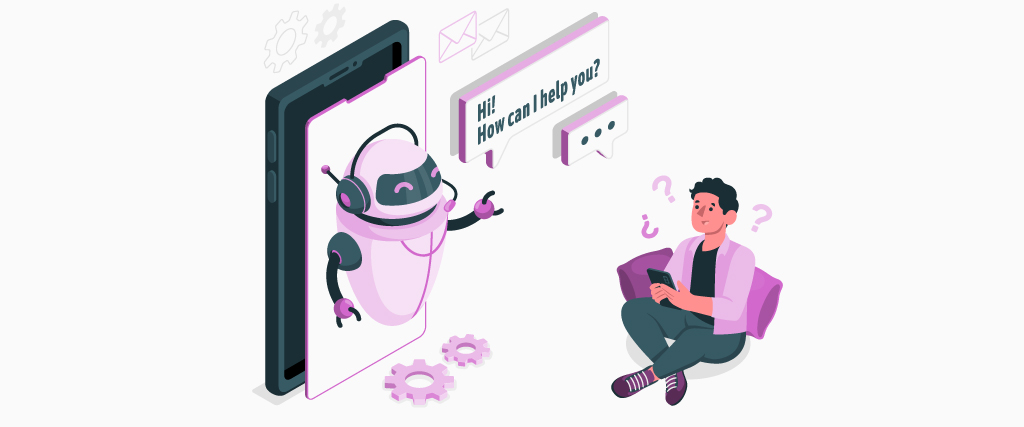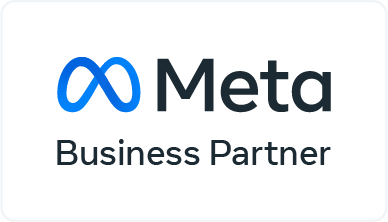Chatbot Analytics: Most businesses these days employ a chatbot to engage customers on different platforms. For example, Dominos Pizza has a chatbot, even on Facebook messenger. Sitting anywhere in the world, you can easily order a pizza online.
That’s amazing, isn’t it?
Chatbot uses Artificial Intelligence (A.I.) technology to initiate intelligent conversations with users online. With pre-defined query templates, users can find answers to their most pressing concerns regarding a website. While doing so, they save time by reducing interaction with customer service representatives.
But, as a company, how do you understand the performance of your chatbot? You may want to understand different chatbot analytics aspects like:
- Total number of users who have had a conversation with the chatbot
- How effectively is a user query handled
- No: of returning users
- Achievement of business goal
- Total chat time
In this blog, we shall analyze the most crucial chatbot metrics for any business.
Let’s dive in!
Top 11 Chatbot Analytics Metrics
The effectiveness of a chatbot depends on many factors like interaction volume, response rate, failure rate, bounce rate, and more.
Let us understand each of these chatbot analytics metrics in detail.
1. Total Chatbot Interaction Volume – Chatbot Analytics
Total chatbot interaction volume is the total number of requests handled by a chatbot over a period of time, like per day or month.
This metric gives you a clear idea of queries that did not escalate to customer support or email ticket level. The more efficient your chatbot, the better its ability to handle huge volumes of requests per day.
2. No: of Returning Customers
Do your customers regularly use your chatbot to solve their queries? If so, it means that your chatbot is a favorite among your customers, and they believe in its efficacy.
You can track the detail of your returning customers by monitoring their I.P. address or by collecting their demographic information like location.
3. Query Understanding Level of Chatbot – Chatbot Analytics
Is your chatbot able to clearly interpret a user’s query? Or, does the user have to simplify their question? Top-level AI-powered chatbots are quick in understanding a user’s question. They respond instantly and solve a user’s pain point. If not, the waiting time of a customer increases, leading to frustration.
4. Achievement of a Specific Objective
Has your chatbot helped you achieve a specific business goal? It could be reducing customer support calls or email complaints. If you are performing well on these parameters, your chatbot is functioning well.
5. Probability of Bounce Rate – Chatbot Analytics
Bounce rate determines the percentage of users who exit your website without talking to your chatbot for a desired period of time. It could be due to many factors like:
- Low visibility of chatbot
- Difficulty in understanding response
- Poor design
- More response time
Hence, create a first impression by creating an attractive and clearly visible chatbot. Usually, a chatbot on the right side of the screen gets the user’s attention soon.
6. Total Chat Time
How long did your chatbot take to resolve the user’s query? Less number of messages in the conversation indicates higher efficiency of your chatbot.
It means your chatbot rightly interpreted the customer query and gave them a solution. Conversely, more messages indicate the inefficiency of your chatbot in understanding customer messages. Make sure that you create a memorable and short interaction experience for your users.
7. Chatbot Response Rate
How soon can a chatbot detect and process the initial message of a customer? More the wait time, users resort to other alternatives like email or toll-free numbers.
Hence, ensure that your chatbot is programmed to respond within 5-10 seconds of receiving a user question. A better response rate increases the trust factor and builds a long-lasting relationship with your customer.
8. Chatbot Failure Rate
In some cases, in spite of multiple messages, a chatbot fails to understand the query. Hence, a customer’s wait time increases, and they end by directly talking to the customer service representative. A user could get frustrated with the delayed query resolution time and end up abandoning your business altogether.
9. Customer Satisfaction & Feedback
After the conversation with a chatbot ends, you can use a survey to collect feedback from your user. The survey could be either open-ended or close-ended in nature.
You can ask your customers to rate you on the chatbot experience. Or, you can ask them to give detailed feedback as to what went well and what did not during the conversation. This information will help you revamp your chatbot and increase its functionality.
10. Outreach to the Right Target Audience
Does your chatbot get you closer to your ideal target audience? They could have different demographics like age, location, income, marital status, and so on.
By understanding these details, you can better analyze the needs and challenges of your potential customers. Hence, ensure that the chatbot interacts explicitly with the desired customers to get you a good return on investments.
11. New Leads Generated – Chatbot Analytics
The effectiveness of a chatbot also helps you get new customers. For example, Imagine a user asks your chatbot regarding the pricing of your products.
The user is satisfied with the pricing and immediately purchases your product. Hence, you have created a new lead. Conversely, confusing answers can make your potential customers drop out of your website.
Wrapping Up
AI-powered chatbots are an effective way to interact with your users and decode their queries. The efficacy of chatbots depends on different factors ranging from total interaction volume to the chatbot failure rate.
Ensure that your chatbot handles an optimum amount of queries every day. It reduces the queries reaching the customer support team directly.
Then, customer service representatives can focus their energies on more urgent tasks. Chatbot Analytics, Also, chatbots that can handle questions in more than one language can reach the audience in multiple regions effectively.
Read More: Chatbots as a Lead Generation tool 2021







